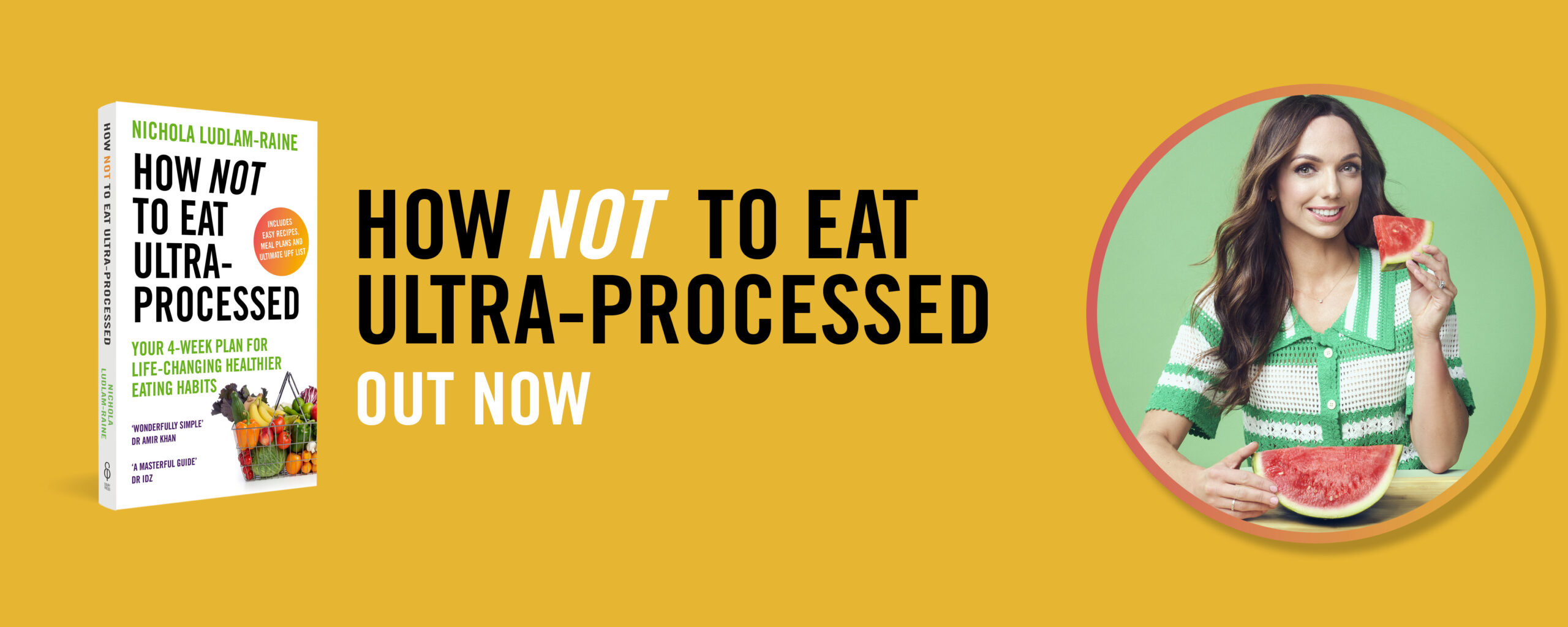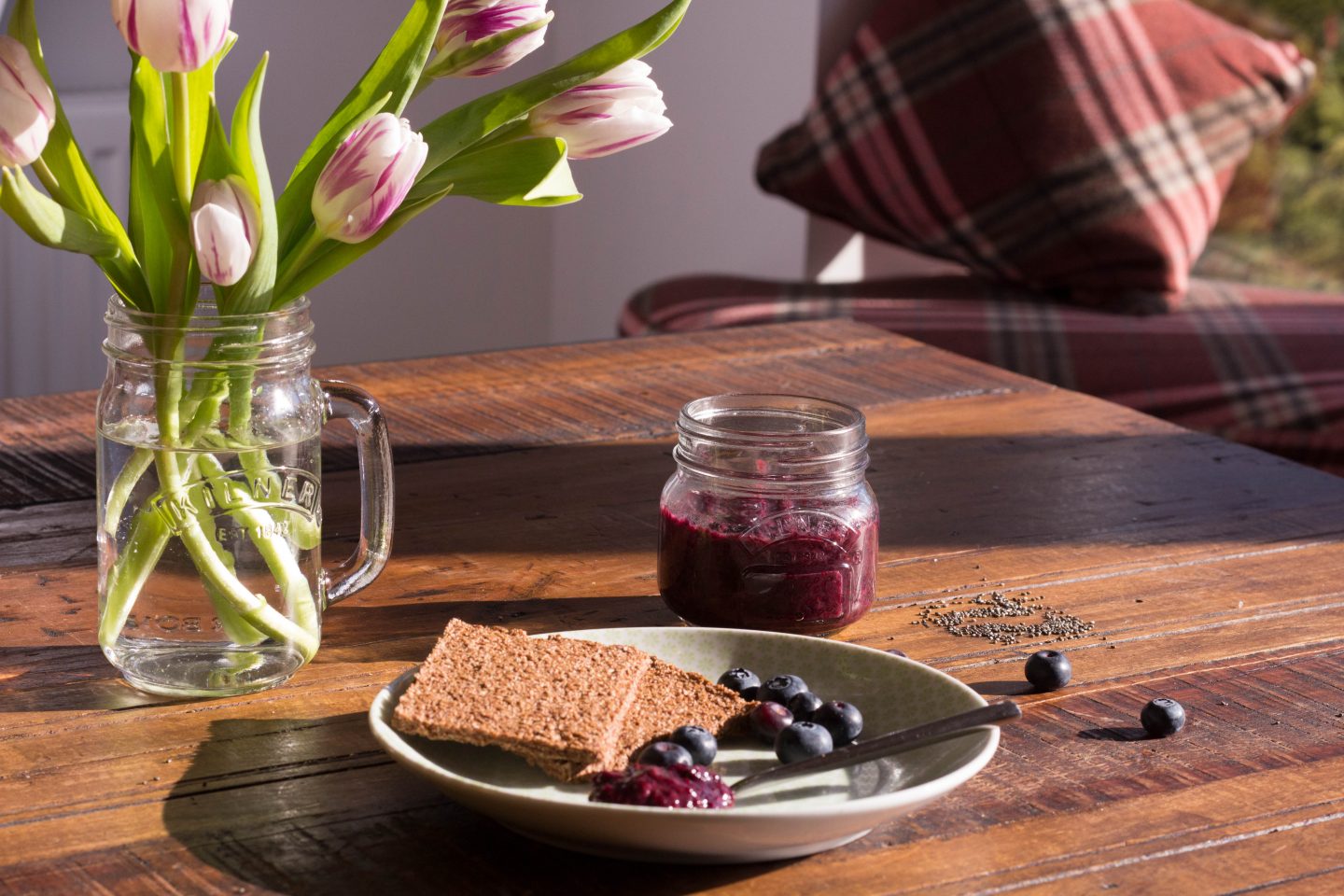
We tend to eat what is within easy reach, which is why it’s crucial to make sure that your kitchen in particular encourages healthy food choices. The aim is to make the healthy choice the easy choice!
I’ve focussed on the kitchen in this article because typically all food in the house should be kept there; even if you eat in the lounge make sure to take in with you only what you want to eat i.e. 2 biscuits instead of the packet! And if you’re after a healthy snack for the sofa, scroll to the end of this article for my delicious coconut fairy cakes recipe.
It’s the little things that matter when it comes to healthy eating in your home environment, so read on for my top 5 ‘little things’ tips, inspired by Sofology’s latest campaign, for making your kitchen healthier!
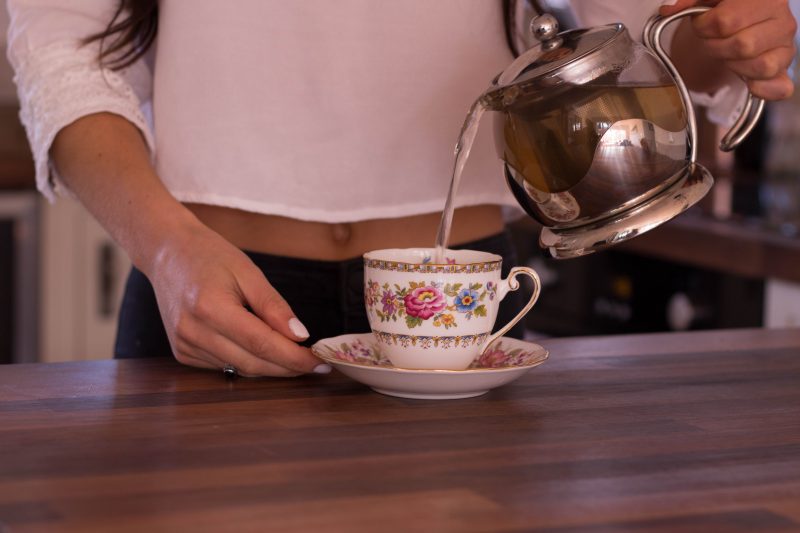
- 1) REARRANGE YOUR FRIDGE
Do you ever catch yourself opening the fridge when you’re ‘bored’, just to see if anything catches your eye? If so then take note.
Start with the more indulgent foods such as leftover cake or party foods; keep these foods at the very bottom or very top of the fridge wrapped in tin foil i.e. away from the eye-line. Covered up, these foods won’t jump out at you and scream ‘eat me’ the next time you open the fridge to get some milk.
Moving onto foods that should be kept at eye level; make sure to keep your middle shelves full of healthy, ready to eat foods such as boiled eggs, plain yoghurt, pre-cut veggie sticks (in see through containers or clear food bags) and dips such as hummus, salsa or home-made guacamole as well as a pre-cut fruit salad covered in cling-film and slices of chicken or turkey. Any spreads such as jam should be the ‘no added sugar’ or ‘reduced sugar’ variety or why not have a go at making some chia seed jam at home! Make sure that your healthy food i.e. whole foods that are rich in nutrients, are both easy to see and easy to eat.
For foods that may go off quicker than usual, such as avocado halves, cut lemons and sliced tomatoes, you may want to check out containers which are specifically designed for, and look like, plastic versions of these foods.
NB: From a food hygiene and safety point of view, always keep raw meat on a tray near to the bottom of the fridge to avoid any juices dripping on any other food, and always wash vegetables and salad foods before eating or preparing.
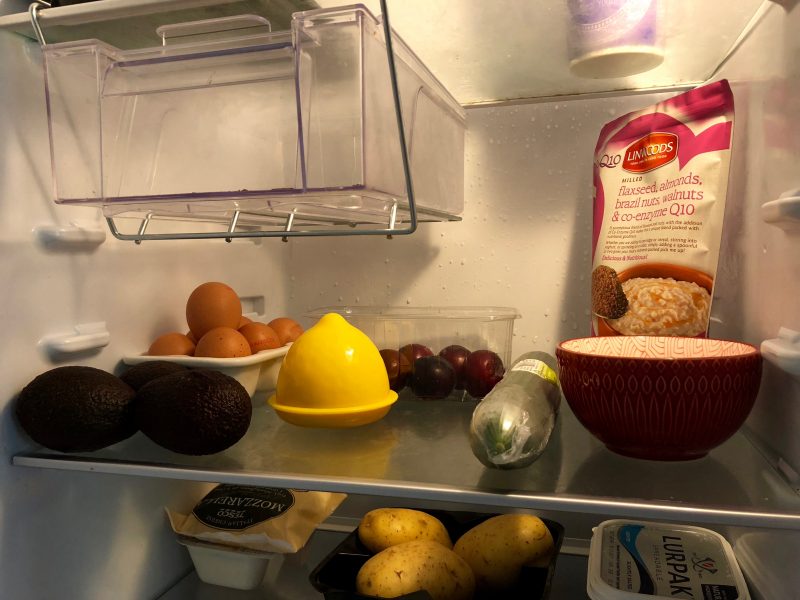
- 2) MOVE AROUND YOUR FREEZER
When it comes to your freezer, make sure to follow the same rules as for your fridge; keep healthy foods in easy to reach, eye-catching places (every freezer should contain 2 to 3 bags of frozen vegetables as well as frozen fruit such as berries and banana slices), and foods such as ice-cream and oven chips towards the back.
If you’re a big fan of ice-creams then I highly recommend checking out the mini versions which are often under 50 or 100 calories. They are an ideal way of having something sweet but without the calorie hit, or why not try making your own banana-nice-cream; simply blend frozen banana pieces in a food processor until smooth.
Every home should also have a good supply of either Tupperware or freezer bags and labels; both are an ideal way of storing leftovers from dinner for the evenings when you’re rushed and don’t have time to cook. Just make sure to label the container before freezing.
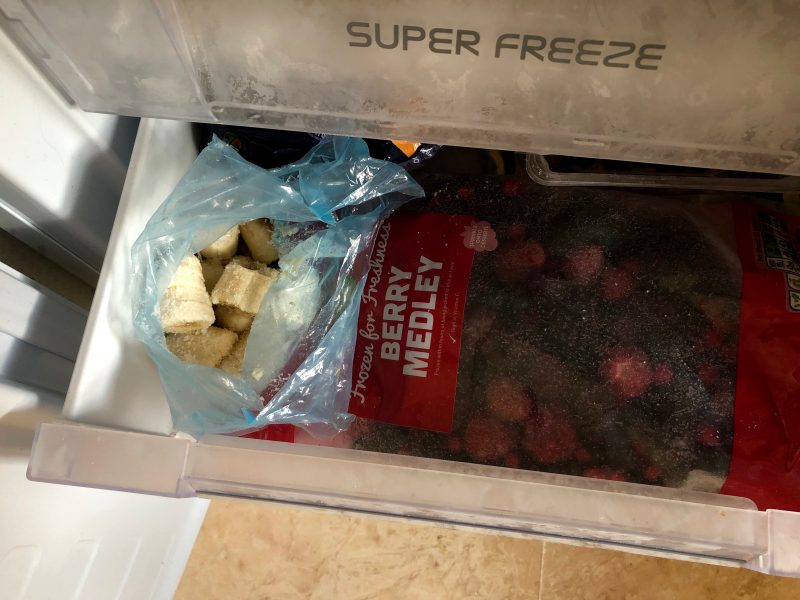
- 3) ORGANISE YOUR KITCHEN COUNTER
Ever heard the phrase tidy home, tidy mind? Having a declutter of your kitchen work-tops may not only help you to feel more at ease but it will make cooking both easier and (hopefully) more enticing too. Keep all foods, with the exception of a fruit bowl OFF the counter and away in cupboards; and this includes the biscuit tin!
To encourage use, keep your blender and slow cooker out on display; you’ll be much less likely to use them if they’re tucked away in a cupboard. One of my favourite smoothies is frozen banana with a tablespoon of peanut butter and milk; it’s quick to make and makes an ideal breakfast for on the go. In the same vein, make sure to have healthy recipe books as well as a book stand on show; it’ll encourage you to experiment with healthy recipes. You could even write out a weekly meal plan, using at least one new recipe during the week, and have this on display for all of the family to see.

- 4) SPRING CLEAN YOUR FOOD & SNACK CUPBOARDS
When it comes to your kitchen cupboards, a mini spring-clean/rearrange may be in order. When it comes to high calorie ‘junk’ foods i.e. foods that provide little in the way of goodness such as biscuits and chocolates, keep them in one hard to reach cupboard; or better still, keep them out of the house altogether! The idea of keeping them out altogether means that they won’t have a tendency to jump out at you when you’re making a cup of tea. If you’ve ever heard of the ‘See Food Diet’ then you’ll understand this tip; out of sight really is out of mind when it comes to avoiding temptations!
Regarding foods such as cereals, and in order to encourage both yourself and your family to make healthier choices at breakfast, the key is to put the healthier cereals at the front i.e. porridge oats, and the less healthy cereals (including honey, sugar and chocolate coated cereals) towards the back. This simple change around will mean that the healthier choice is the easier choice and you never know, the sugary cereals may be forgotten about altogether; or you could save them for a healthier ‘treat’ (instead of a chocolate bar) or for a weekend only.
You may also want to invest in some clear glass jars for foods such as oats which are ideal for both breakfast and baking. Other foods such as rice and pasta can also be stored in glass jars which may help to increase the shelf-life (if the jar is airtight). Just make sure that your jars aren’t overly big as research shows that the bigger the container, the more we are likely to pour out!
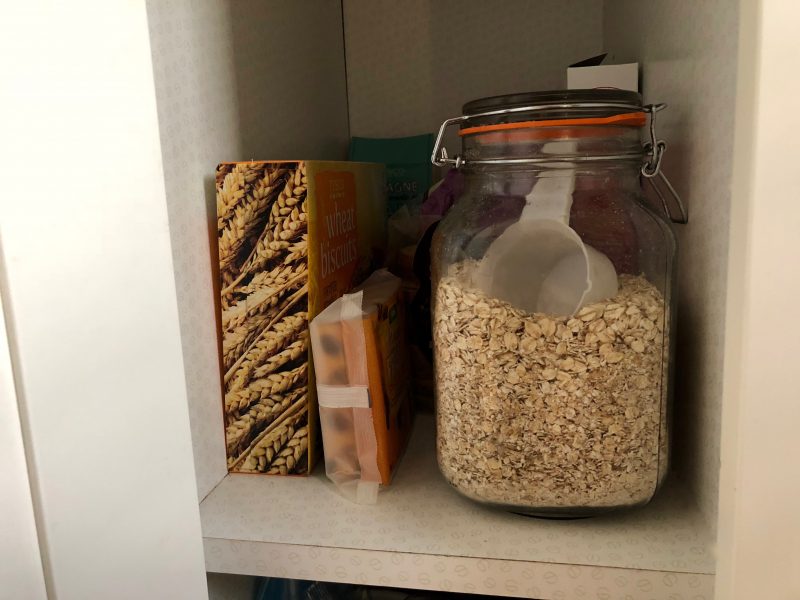
- 5) MAKEOVER YOUR FOOD SHOPPING LIST
Have a look at the following foods and make sure that they are on your next shopping list!
Cupboard Staples
Oats – ideal for making overnight oats or porridge.
Tins of Baked Beans & Kidney Beans – the perfect high fibre addition to breakfast, brunch or lunch, or a chilli or stew respectively.
Potatoes – sweet or regular potatoes are not only versatile but filling too.
Tinned Tuna & Sardines – buy tinned in spring water or tomato sauce to add to salads or a wrap for a quick lunch. Sardines count towards your oily fish intake for the week too.
Nuts – nuts are high in monounsaturated (healthy) fats and make an ideal quick snack (choose unsalted).
Olive Oil (use refined in cooking and extra virgin in salad dressings) – adding olive oil to a salad not only helps to maximise flavour but helps you to absorb the fat soluble nutrients vitamins A, D, E and K too. Rapeseed oil is often a cheaper alternative to olive oil.
Wholemeal Wraps – these are great to have on hand for a quick lunch or you could even use them to make a healthy pizza for an evening meal.
Herbs & Spices such as basil, oregano, salt, pepper and cinnamon; flavour is key to enjoying meals.
Chopped Tomatoes – an essential base for so many dishes including chilli, spaghetti bolognese and curry.
Fridge Staples
Feta Cheese – crumble feta cheese on top of baked eggs or into a salad or wrap for texture, flavour and, of course, protein and calcium.
Milk (Cow’s, Soya or Nut Milk) – essential for smoothies as well as teas and coffees (4-5 cups of tea or coffee a day is deemed a moderate intake). If you are lactose intolerant then make sure your milk alternative is unsweetened and fortified with calcium.
Spinach – you can add spinach to a stir fry, smoothie or wrap for an extra dose of vitamin A.
Eggs – boiled eggs are a great high protein snack to keep you full or you could have them scrambled on toast for breakfast.
Hummus – the ideal high fibre accompaniment to crudités such as carrots, cucumber and peppers.
Salmon – packed with essential omega 3 fatty acids salmon is great for our heart and brain function.
Chicken – cooked chicken can be added to wraps or noodles and vegetables for a quick stir fry.
Freezer Staples
Meat-Free Sausages – these are often lower in fat and calories than regular sausages.
Vegetables – such as peas, green beans and sweetcorn. Frozen vegetables often contain more nutrients than fresh, they don’t go off as quickly and they require minimal preparation and cooking time.
Kitchen Counter Staples
Fruit such as bananas, apples and satsumas – an easy to eat, high fibre, nutrient rich snack for on the go. Research shows that if you keep fruit on your kitchen counter you are more likely to eat it!
Creative Baking Staples
Xylitol – a healthier alternative to sugar that’s kind to teeth health.
Coconut Oil – an oil which is great for baking (instead of butter) and for using in curries or when cooking at high temperatures.
Coconut Flour – a high fibre flour that can be used in no-bake recipes too.
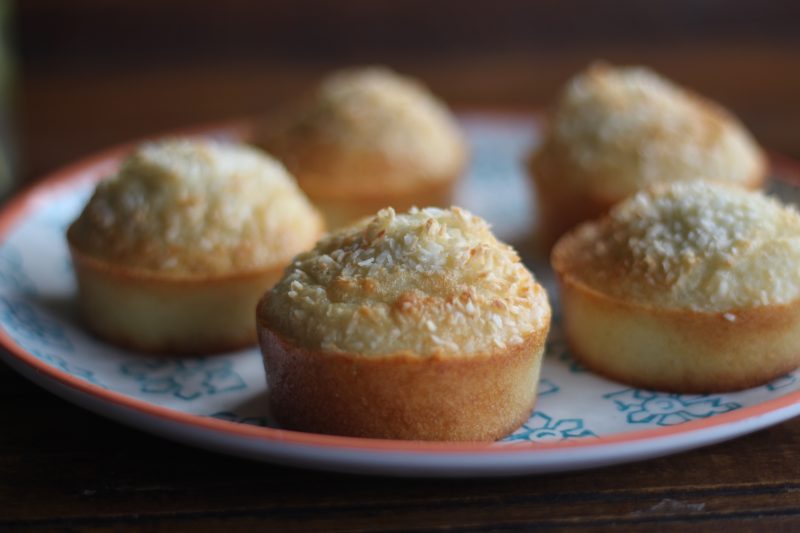
If you’re looking to jazz up your baking, then coconut flour is for you. Coconut flour is made from coconut meat (the flesh) and it is both gluten-free and high in fibre. The flour has a low GI (glycaemic index) which means that it releases its energy slowly and it’s also a great source of protein and healthy fat.
Coconut flour can be used in baking, to thicken gravy or as an addition to smoothies to boost the fibre content. Coconut flour is very absorbent so it is recommended to either blend it with other flours at a ratio of ¼ cup of coconut flour to ¾ cups of alternate flour, or to increase the liquid part of the recipe e.g. milk/water and to use eggs at a ratio of 4 eggs to 1 cup (~120g) of flour. Coconut flour is also great for coating meats and fish before frying (use some egg to help the flour ‘stick’).
Coconut flour smells and tastes delicious and if you’re keen to use it in baking then check out my recipe below. These coconut flour fairy cakes are super light, taste delicious and make an excellent sofa snack too!
Coconut Fairy Cakes
Ingredients
- 1/4 cup (35g) coconut flour
- 2 eggs & 1 egg white or 3 whole eggs
- 1/4 cup (65ml) coconut oil (melted)
- 1/4 cup (60g) xylitol or coconut sugar
- 1/4 cup (20g) unsweetened desiccated coconut
- 1 tsp vanilla
- 1/2 tsp baking powder
- pinch of salt
- Optional - 50g dark chocolate chips & desiccated coconut for sprinkling
Instructions
- Pre-heat your oven to 175 degrees C
- Combine all of the ingredients in a bowl using a wooden spoon
- Divide between 8 silicone muffin cases & sprinkle with desiccated coconut (optional)
- Bake for 15-20 minutes until golden brown (20 minutes if using xylitol and 15 minutes if using coconut sugar)
- Allow to cool and enjoy!
Notes
Calorie stats (per 8th of the mixture) shown are for using xylitol, 2 eggs plus 1 egg white, and no chocolate chips.. if you decide to swap the xylitol for sugar, use 3 whole eggs and add chocolate chips then you need to add on 60 calories, 10g carbs and 1g fat (the protein remains the same!).
Nutrition Facts
Amount Per Serving | ||
|---|---|---|
Calories 129 | ||
% Daily Value | ||
Total Fat 10 g | 15% | |
Total Carbohydrates 9 g | 3% | |
Protein 3 g | 6% | |
* Percent Daily Values are based on a 2,000 calorie diet. Your daily values may be higher or lower depending on your calorie needs.
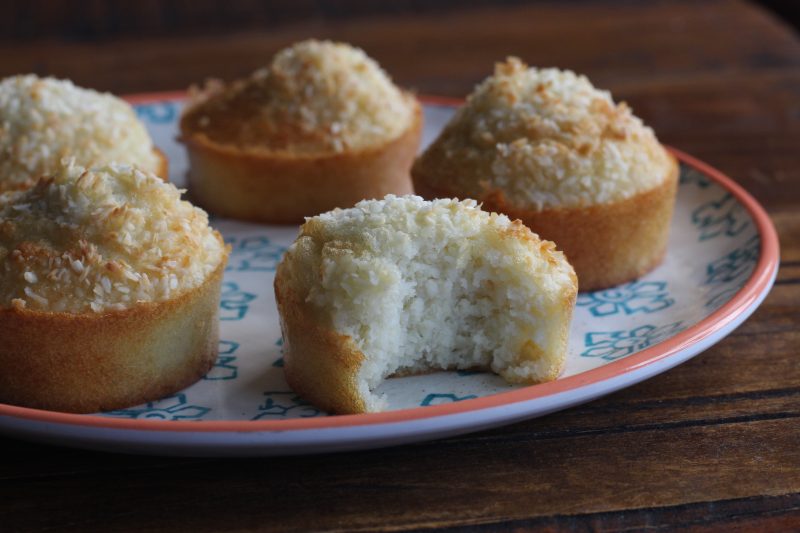
What little things can you do to your kitchen to make it healthier?

*(AD) This blog post has been kindly sponsored by Sofology. Please read my disclaimer page for more information.
